The problem with history textbooks is that they don’t put things into a conversational tone that makes kids curious. They do have photographs and illustrations but the text blurbs are usually quite short and just like Jack Webb or J. Jonah Jameson, they list just the facts. Sometimes they follow up every other page with a thinking activity or series of questions that students will leave blank or fill out with incomplete sentences when asked to answer them by the teacher. Big Ideas from History is an intelligent reference book that looks at integral chapters in history, like evolution, the start of religion, the ends of civilizations, science, and many more big concept issues.
It presents these issues and concepts, but doesn’t just list facts and stories that ages nine and up are asked to blindly think about as an exercise in rote memorization. Big Ideas from History also puts forth opinions. It asks hundreds of questions that are put forth to readers like what would the rules be in your monastery if you were running one in 500 BC? The book might also ask you how democracy and experts can exist at the same time or what was the working class doing while a select few were going to school in the pre-1800s? The book asks some heady questions not just to have kids write down the answers but for a much more logical and needed purpose.
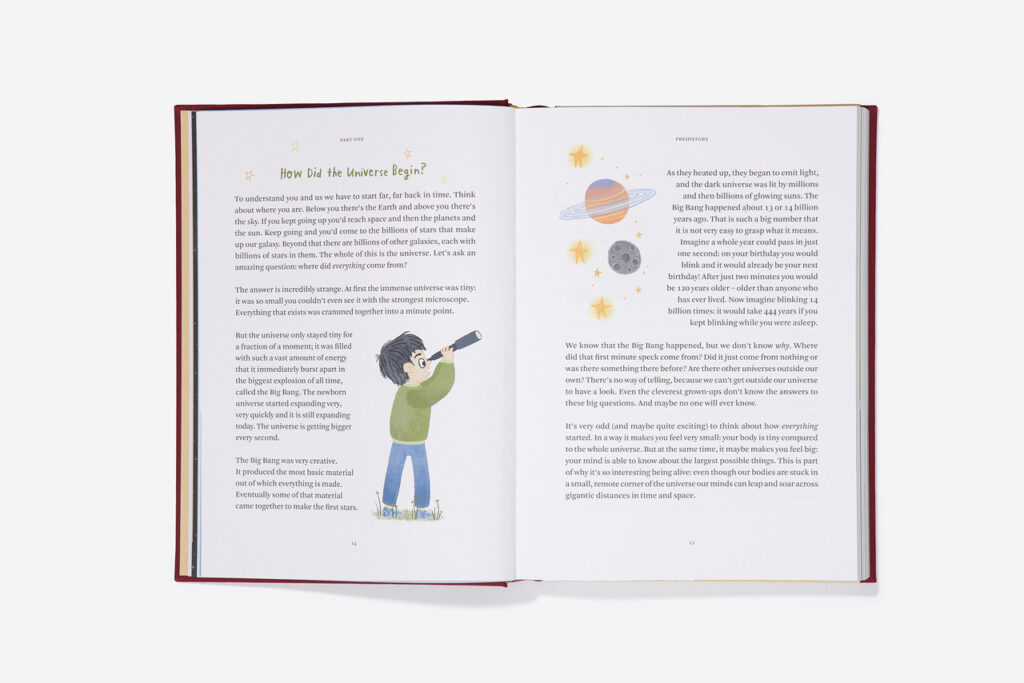
I’ve spoken with other educators about this frustration and that is the lack of critical thinking amongst students. It’s not just limited to certain grades or geographic regions that I’ve seen or taught. In my experience, the inability for students to ask the correct questions and do a deep dive into any subject matter is glaring. My expectations are not that lofty. Elementary ages will only be able to do so much and each school tier above that should be able to accomplish more. It’s not just about asking questions. It’s about asking appropriate questions at the right time to further a conversation, as opposed to wasting class time.
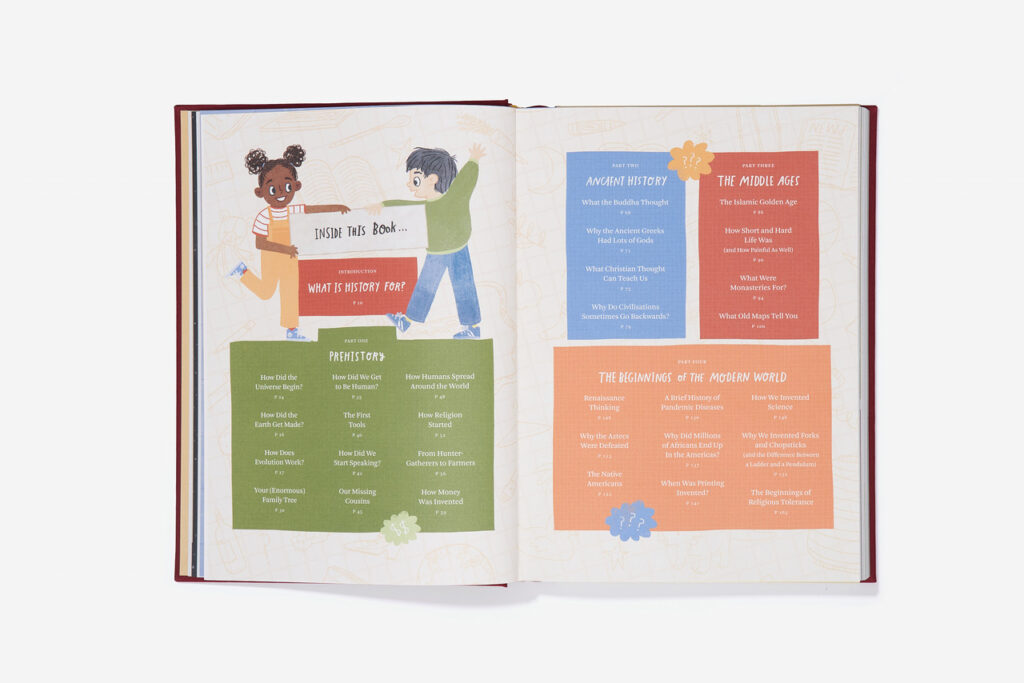
The content in Big Ideas from History is presented at a reading level that some students aged nine and up can read by themselves. Every 10-year-old should be able to read the book and understand it. However, middle school audiences are going to be the sweet spot for Big Ideas From History. The things that the book talks about are new to them, or new enough to where a different perspective isn’t repetitive or too basic. Moreover, the subjects are not presented in the same stoic way that they’re used to in a textbook.
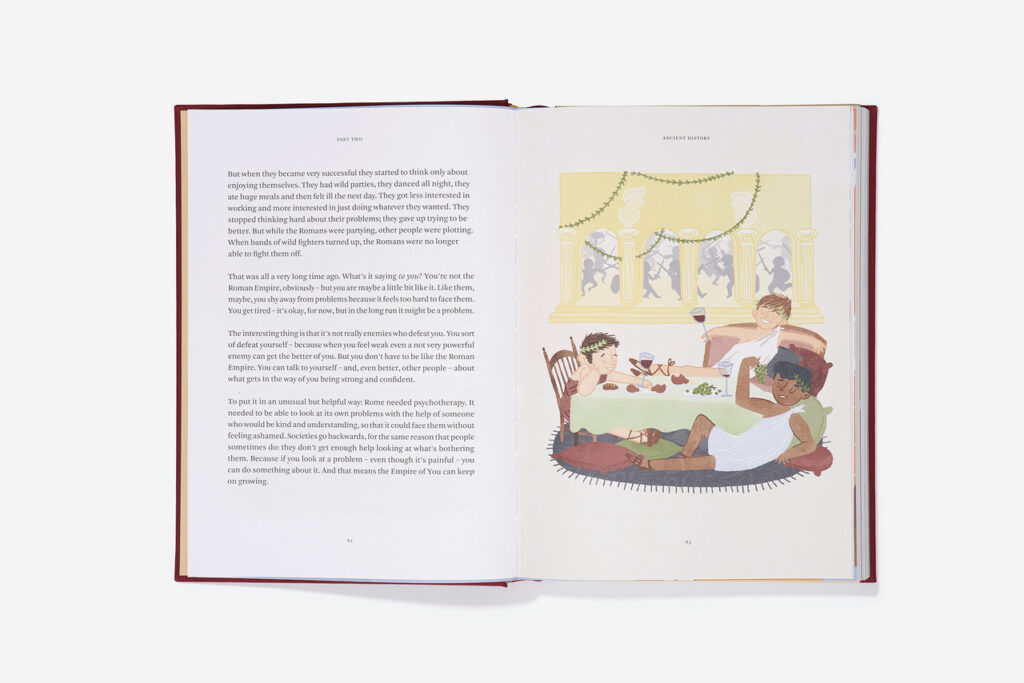
Audiences will have to be curious and have a desire to question things to fully appreciate and enjoy the book. If you like questioning things, peeling back the layers of the onion or wondering why things are the way that they are how they’ be drastically different is something simply were changed, then you’ll love the experience. For the most part, Big Ideas From History is not passive reading that you’ll stumble into.
It’s a thick book that resembles a textbook in its size. The cloth cover to the book and the handwritten, but easy-to-read font, for the title will warm up some audiences that might have otherwise been intimidated. The paragraphs are easy to read, bite-sized nuggets of information that organically lead to the next paragraph and make you think. However, it’s not that text-based thinking is a chore, but this is more of a conversational, down-to-earth tone that simply presents information from a slightly different vantage point and asks readers to think about it.
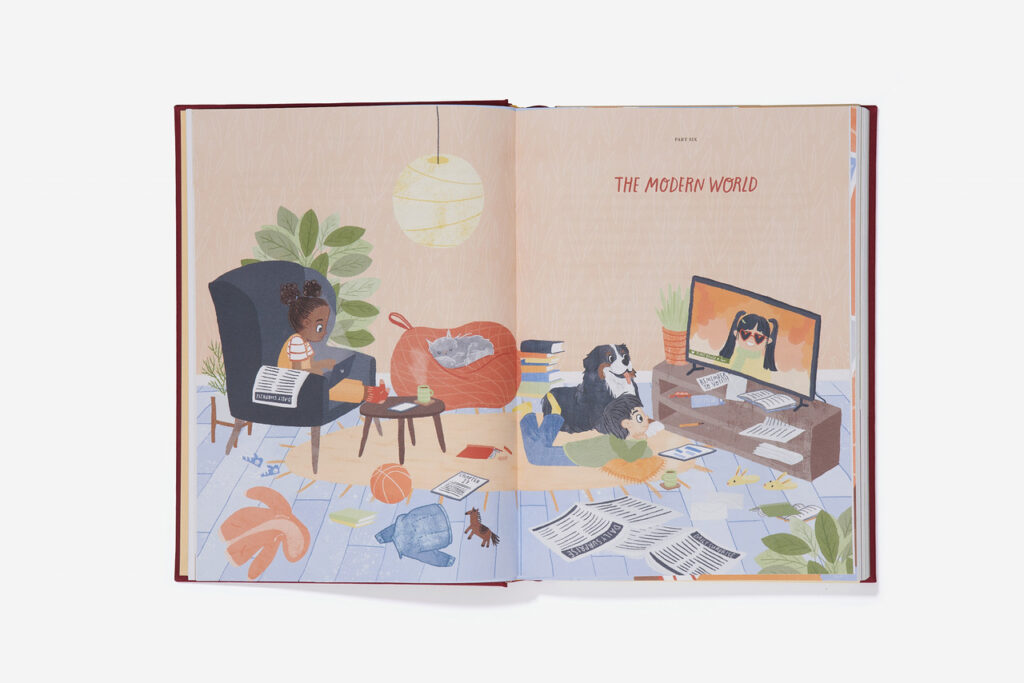

See, the book requires a little thought, which is not a bad thing. Those deep-thinking elementary school kids who want to ponder about the impossibility of eating ice cream in the Middle Ages or how 2,000 years ago Eratosthenes figured out that the Earth is curved will relish Big Ideas From History as a read-aloud book. I do realize that those kids will be the exception, rather than the rule, but in 20 years those that do will be better off for the experience. They might not realize it, but their critical reasoning skills will be at a much higher level, they’ll probably have better jobs, be happier and earn more money too. But try selling that sentence as a reason to read the book to a kid who is tempted by some poofy-haired teen playing a video game on that device that they’re holding. That same kid’s 33-year-old self will look back in the rear-view mirror of life and kick themselves for not learning more when they were afforded the opportunity.
Big Ideas from History, A History of the World For You is available from The School of Life and published by Ingram Publishing Services.
There are affiliate links in this post.


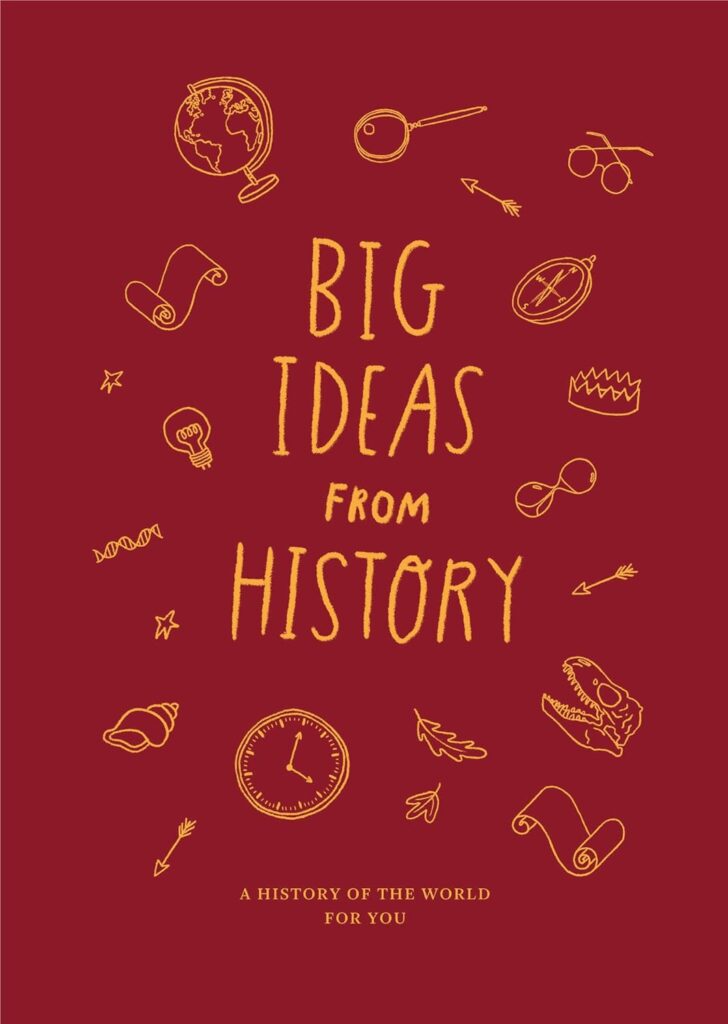



 Facebook
Facebook Twitter
Twitter Flickr
Flickr GooglePlus
GooglePlus Youtube
Youtube